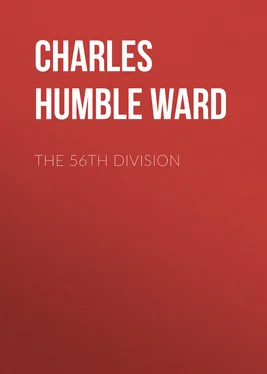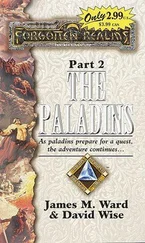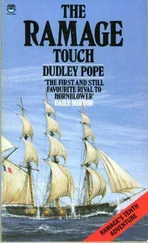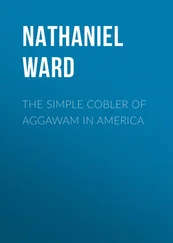Charles Humble Dudley Ward - The 56th Division
Здесь есть возможность читать онлайн «Charles Humble Dudley Ward - The 56th Division» — ознакомительный отрывок электронной книги совершенно бесплатно, а после прочтения отрывка купить полную версию. В некоторых случаях можно слушать аудио, скачать через торрент в формате fb2 и присутствует краткое содержание. Жанр: foreign_prose, История, foreign_edu, foreign_antique, на английском языке. Описание произведения, (предисловие) а так же отзывы посетителей доступны на портале библиотеки ЛибКат.
- Название:The 56th Division
- Автор:
- Жанр:
- Год:неизвестен
- ISBN:нет данных
- Рейтинг книги:5 / 5. Голосов: 1
-
Избранное:Добавить в избранное
- Отзывы:
-
Ваша оценка:
- 100
- 1
- 2
- 3
- 4
- 5
The 56th Division: краткое содержание, описание и аннотация
Предлагаем к чтению аннотацию, описание, краткое содержание или предисловие (зависит от того, что написал сам автор книги «The 56th Division»). Если вы не нашли необходимую информацию о книге — напишите в комментариях, мы постараемся отыскать её.
The 56th Division — читать онлайн ознакомительный отрывок
Ниже представлен текст книги, разбитый по страницам. Система сохранения места последней прочитанной страницы, позволяет с удобством читать онлайн бесплатно книгу «The 56th Division», без необходимости каждый раз заново искать на чём Вы остановились. Поставьте закладку, и сможете в любой момент перейти на страницу, на которой закончили чтение.
Интервал:
Закладка:
On Z day the preliminary bombardment was to be the same as on former days, with no increase until zero hour. When the intense fire, or barrage, commenced, there were gaps left in it for the advance of Tanks.
For the XIV Corps there were, taking part in this attack, fifteen Tanks. Nine were allotted to the Guards Division, three to the 6th Division, and three to the 56th Division.
The instructions given to Tanks were that they should start their attack at a time which would enable them to reach the first objective five minutes before the infantry. When they had cleared up the first objective, a proportion of them was to push forward a short way, to prearranged positions, and act as strong points. Departure from this programme to assist any infantry held up by the enemy was left to the discretion of the Tank Commander.
On the second objective Tanks and infantry would advance together and pace was to be regulated to “tank pace,” which was given as from 30 to 50 yards a minute. For the third and fourth objectives there would be no creeping barrage, and Tanks would start in time to reach the objectives before the infantry. In all cases their action was to be arranged so as to crush wire and keep down hostile rifle and machine-gun fire.
Signals between Tank and infantry were arranged for by means of coloured flags—a red flag meaning “out of action,” and a green flag “am on objective.”
The main task of the 56th Division was to clear Bouleaux Wood and form a strong protective flank, covering all the lines of advance from Combles and the valleys running from the north-east of Combles. The 167th Brigade were ordered to advance as far as the bit of Beef Trench running through Bouleaux Wood, and to Middle Copse on the left of the wood; a flank was also to be formed to the south-east and clear of the wood. The 168th Brigade were to pass through the 167th and carry on the advance by further bounds. The 169th Brigade were to hold the line through Leuze Wood and the left of square 27, and to capture the well-known trench (Loop Trench) to the south-east of the wood which runs into the sunken road to Combles.
One Tank was to advance on the right of Leuze Wood and assist the 169th Brigade to drive the enemy beyond the sunken road; it would then establish itself in the Orchard as a strong point. This Tank was called the Right Tank.
Two Tanks were to work from the north of Leuze Wood along the left of Bouleaux Wood and assist the 167th and 168th Brigades. These were known as the Centre and Left Tanks, and were eventually to proceed to a railway cutting north-east of Bouleaux Wood, which promised to be a point of some difficulty.
The Right Tank, having seen the 169th Brigade safely in its objectives, was to move along the south-east of Bouleaux Wood and take up a position on the cutting in the top end of square 22.
In the XIV Corps area the Tanks were by no means a success. It is only right to say that this was not the fault of their crews. Every excuse must be allowed, for the Tank was not only a new invention, and, like most new inventions, somewhat clumsy in the first design, but the ground was absolutely vile. We have not alluded to the weather, which, however, was a most important factor just now. The field of battle was a field of mud; the resting area of the division was a field of mud; the roads and tracks were rivers of mud; anyone can paint a picture of the battle of the Somme provided he can paint miles of mud. And the Army had simply blasted its way forward so that the shell-holes cut one another in the mud.
The scene round Leuze Wood, Guillemont, and Ginchy was a nightmare. There had been little time to devote to the burial of the dead, and corpses lay literally in heaps where the fighting had been severe. One has only to imagine the results of repeated and obstinate attempts to capture a position to realise what it must look like before it is finally taken. An attack is launched and fails. Why does it fail? Perhaps twenty men of a company get back to the trench from which they attacked, and where are the others? On the ground. After five or six attacks, each going out strong and coming back weak, each heralded by a “barrage,” what will the place look like?
We may mention here that the stretcher-bearers worked with eight men to each stretcher, and each ambulance required six horses to drag it through the mud.
Just before 1 a.m. one of the Tanks allotted to the 56th Division broke down on its way to the assembly position. This accident left the division with one Tank working on either side of the Bouleaux Wood.
The assault commenced at 6.20 a.m., and was followed by some of the fiercest fighting in the history of the war. On the right of the division the 2nd London Regt. succeeded, after some hours of gallant and determined effort, in driving the enemy from the greater part of Loop Trench, the enemy clinging to the junction with the sunken road. The Tank, which was some time before reaching the sunken road, gave valuable assistance, but was set on fire by a direct hit from a field gun. The fight then turned to the sunken road and the trench on the far side of it; but the enemy was strong and no less determined than the men of the 169th Brigade. No further advance was gained in this direction.
On the left of the division the 167th Brigade attacked, with the 1st London Regt. in line and the 7th Middlesex in support in Leuze Wood. The 1st London Regt. captured that portion of Beef Trench outside Bouleaux Wood and, together with the 7th Middlesex—who were to advance through them, but both units became mixed—occupied Middle Copse.
So far as the 56th Division was concerned, the result of the day’s fighting remained with the advance on the south-east of Leuze Wood as far as the Combles road, and on the north-west of Bouleaux Wood to Beef Trench and Middle Copse. The enemy retained the whole of Bouleaux Wood and the trenches to the north of the Combles road, and the road itself. But the action, certainly of the 167th Brigade, was influenced by the fortunes of the divisions on the left.
The centre of the horseshoe which had been formed from the east of Ginchy to the cross-roads east of Guillemont, and then to the north of Leuze Wood and along Bully Trench, and which was prevented by the Quadrilateral from being a complete circle, can scarcely have been an enviable place for the Germans who were there. As fighters, these Germans deserve the highest praise. They were of the 21st and 7th Bavarian Regts., of the 5th Bavarian Division. They were well wired in, and had in the Quadrilateral deep dugouts in their front lines and others in the ravine behind the position. But though we grant them a perfect position and well-constructed defences, we must also admit they performed a fine feat of arms. Those in the Quadrilateral had resisted all efforts of the 56th and Guards Divisions to bomb them out, and those in the horseshoe had repulsed the 16th Division and the 6th Division, which attacked them on the 13th. They had actually been under severe artillery fire and subject to repeated assaults since the 9th September, and on the 15th, in spite of Tanks, of creeping barrages, and of the heavy artillery, they remained immovable.
The worst kind of luck had attended the Tanks of the 6th Division—only one managed to reach the jumping-off line. This Tank went on with the infantry for a short way, had all its periscopes shot away, was pierced by most of the bullets which hit it (and a perfect stream of fire was directed on it), and, the driver being badly wounded, it retired through the ranks of the 6th Division. Had the three Tanks attacked, something might have been done, anyhow with the enemy to the south-west of the Quadrilateral; but with only one, the barrage, arranged with gaps for three, became ineffective, and a concentrated fire on the one Tank soon put it out of action—it also drew attention to the infantry attack. Briefly, the 6th Division failed.
Читать дальшеИнтервал:
Закладка:
Похожие книги на «The 56th Division»
Представляем Вашему вниманию похожие книги на «The 56th Division» списком для выбора. Мы отобрали схожую по названию и смыслу литературу в надежде предоставить читателям больше вариантов отыскать новые, интересные, ещё непрочитанные произведения.
Обсуждение, отзывы о книге «The 56th Division» и просто собственные мнения читателей. Оставьте ваши комментарии, напишите, что Вы думаете о произведении, его смысле или главных героях. Укажите что конкретно понравилось, а что нет, и почему Вы так считаете.




![Александр Ирвин - Tom Clancy’s The Division 2. Фальшивый рассвет [litres]](/books/417744/aleksandr-irvin-tom-clancy-s-the-division-2-falsh-thumb.webp)







